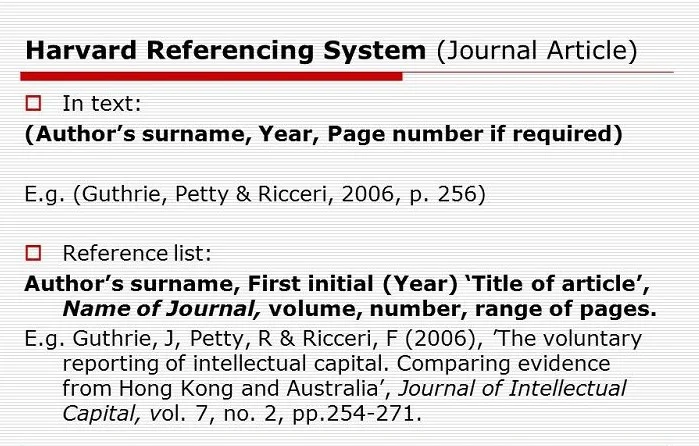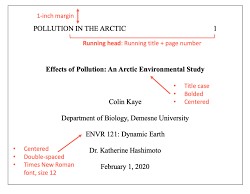Referencing styles are essential tools for academic writing, enabling authors to acknowledge the sources of information and ideas that have influenced their work. Among the various referencing systems available, APA (American Psychological Association) and Harvard referencing are two of the most widely used. Each has its own set of rules and formats for citing sources within academic texts, making it crucial for writers to distinguish between them to ensure accuracy in their writing.
The primary difference between APA and Harvard referencing lies in their citation formats and reference list presentations. APA referencing employs an author-date citation format and has specific guidelines for reference list entries, including the order of information and punctuation. Harvard referencing, while also using an author-date system, varies in the structure and detail required in the reference list, reflecting a degree of flexibility not found in APA style.
Both referencing styles serve the same fundamental purpose: to provide a clear and consistent method for citing sources, thereby avoiding plagiarism and strengthening the credibility of academic work. While they share some similarities, the nuances in their requirements demand attention from students and professionals alike, necessitating a thorough understanding of each style’s specific guidelines.

Reference Styles Overview
APA Basics
Origin and Adoption
The American Psychological Association (APA) style originated in the late 1920s as a set of guidelines to assist reading comprehension in the social and behavioral sciences. It was designed to standardize scientific writing, making it easier to understand and more accessible. Over the decades, the APA style has been updated regularly, with the most recent edition reflecting the latest in citation and formatting guidelines. Its widespread adoption across various academic disciplines underscores its effectiveness in providing a clear, coherent format for scholarly writing.
General Format
APA style is characterized by its author-date format for in-text citations and a detailed reference list at the document’s end. Key elements of the general format include:
- Title Page: Includes the paper’s title, author’s name, and institutional affiliation.
- Abstract: A brief summary of the research and findings.
- Main Body: The core of the paper, structured according to the type of manuscript.
- References: A list of all sources cited in the paper, arranged alphabetically by the author’s last name.
Harvard Basics
Historical Background
Unlike APA, the Harvard referencing style does not originate from a single source or institution. It is named after Harvard University but has evolved through widespread use in various academic fields. The style’s roots can be traced back to the 19th century, making it one of the oldest referencing systems. Today, Harvard referencing is recognized globally, with variations adopted by different disciplines and publications.
General Characteristics
Harvard referencing is known for its simplicity and ease of use. The style features:
- Author-date citations: In-text references include the author’s last name and the publication year.
- Reference list: A comprehensive list of sources that provides full bibliographic details for each reference, allowing readers to locate the sources easily.
Core Differences
Author-Date Citation
APA Format Specifics
In APA style, in-text citations include the author’s last name and publication year, separated by a comma. When quoting directly or referring to specific passages, page numbers are also included. For example: (Smith, 2020, p. 23).
Harvard Approach
Harvard referencing also uses an author-date system for in-text citations. However, it typically omits the comma between the author’s name and the year. Page numbers are included for direct quotes or specific references, similar to APA but with a slight variation in punctuation. For instance: (Smith 2020, p. 23).
Reference List
Entry Structure in APA
APA references list entries start with the author’s last name, followed by initials, the publication year in parentheses, the title of the work (in sentence case), and the source. Journal articles and book titles are italicized.
Differences in Harvard Formatting
Harvard style references similarly start with the author’s surname and initials but differ slightly in the treatment of publication year and source details. The year follows the author’s initials, not in parentheses, and there is greater flexibility in the use of italics and capitalization.
In-text Citations
APA In-text Citation Rules
APA requires the author’s last name and the work’s publication year. For direct quotes or specific mentions, a page number is added. Multiple authors have specific citation rules, such as using “et al.” for works with three or more authors.
Harvard In-text Citation Variations
While Harvard referencing shares the basic in-text citation format with APA, it offers more flexibility in citing works by multiple authors and does not prescribe as strictly the use of “et al.” The approach to multiple authors may vary slightly depending on the source or academic field.
Specific Examples
Citing Books
APA vs. Harvard for Books
When citing books, APA format requires authors to list the author, year, book title (in italics), and publisher. Harvard style is similar but places the year of publication right after the author’s name and does not always require italicization for the book title.
Journal Articles
Comparing Journal Article Citations
For journal articles, APA style necessitates the inclusion of the author, publication year, article title (not in italics), journal title (italicized), volume number (italicized), issue number (in parentheses, not italicized), and page numbers. Harvard referencing follows a similar structure but does not italicize the issue number and often omits the month or season of publication unless it is part of the journal’s issue sequence.
Online Sources
Digital Content Referencing in Both Styles
Citing online sources in APA involves the author, publication date, title of the document or webpage, and the URL. If available, a DOI (Digital Object Identifier) is preferred over a URL. Harvard style citations for digital content also require the author, year, title, and URL but differ slightly in the presentation and formatting of these elements, often emphasizing the date of access for online sources.

Application Contexts
Academic Use
Predominant Style by Discipline
Different academic disciplines tend to prefer specific referencing styles, largely due to the traditions and publication practices unique to each field. For example:
- Social Sciences: The APA style is widely adopted in social sciences, including psychology, education, and sociology. Its structured approach to citing sources lends itself well to these disciplines, which often rely on empirical studies and quantitative data.
- Humanities and Arts: Harvard referencing finds a broader application in humanities and arts. Its flexibility and simplicity make it suitable for disciplines that prioritize authorship and date of publication, such as literature, history, and philosophy.
The choice of style can significantly impact the readability and credibility of academic work, making it essential for students and researchers to adhere to the conventions of their disciplines.
Professional Use
Style Preference in Industries
Beyond academia, referencing styles are also used in various professional settings:
- Healthcare: APA is commonly used in healthcare documentation and research, reflecting its origin in the psychological sciences and its clarity in presenting research findings.
- Legal Studies and Law: The Harvard system is often preferred in legal studies and law for its author-date format, which supports the quick identification of sources and precedents.
Understanding the preferred referencing style in a professional context is crucial for clear communication and maintaining the integrity of documents and presentations.
Choosing Between APA and Harvard
Factors to Consider
Purpose of the Work
The purpose of your document plays a crucial role in determining the most appropriate referencing style. Academic papers, research reports, and professional documents each have different requirements that might be better served by one style over the other.
Audience and Publication Medium
- Audience: Consider who will be reading your work. Specialists in a field may expect the conventional use of a specific referencing style.
- Publication Medium: The platform or medium of publication might also influence your choice. Journals, for instance, often have strict guidelines about referencing styles.
Switching Between Styles
Challenges and Tips
Switching between referencing styles can be challenging, especially when moving from a familiar system to an unfamiliar one. Here are some tips to ease the transition:
- Use Reference Management Software: Tools like Zotero, Mendeley, or EndNote can help manage citations and switch between different referencing styles with ease.
- Familiarize with Key Differences: Understanding the core differences between the styles, as highlighted in earlier sections, can reduce the risk of errors.
- Consult Style Guides: When in doubt, refer to the official style guides or resources provided by academic institutions.
- Practice: The more you practice writing in a different style, the more comfortable you will become. Try converting a piece of your work from one style to another as an exercise.
Switching styles requires attention to detail and a willingness to adapt. By focusing on the requirements of the new style and employing available tools and resources, writers can navigate these changes effectively.
Frequently Asked Questions
What is APA Referencing?
APA referencing is a citation style developed by the American Psychological Association, used primarily in the social sciences. It emphasizes the author-date method of in-text citation and a specific format for the reference list. This style requires detailed information on the publication to help readers locate the source.
When is Harvard Referencing Used?
Harvard referencing is utilized across various disciplines due to its flexibility and simplicity. It is not associated with a specific academic institution but is adopted widely for its ease of use. This referencing style also employs the author-date format for in-text citations and a reference list that includes sufficient details for source identification.
How Do I Choose Between APA and Harvard Referencing?
Choosing between APA and Harvard referencing often depends on the academic discipline and the preferences of the institution or publication. APA is typically used in psychology, education, and other social sciences, while Harvard is more widely applicable across disciplines due to its flexible nature. Always consult your instructor or publication guidelines when selecting a referencing style.
Can I Switch Between Referencing Styles?
Switching between referencing styles is possible but requires attention to detail to ensure all citations and references are correctly formatted according to the new style’s guidelines. It is important to familiarize oneself with the specific rules and structures of the chosen style to maintain consistency and accuracy in academic writing.
Conclusion
Understanding the differences between APA and Harvard referencing is crucial for any academic writer. These styles, while serving the same fundamental purpose of acknowledging sources, have distinct rules that must be followed to maintain the integrity and credibility of scholarly work. By recognizing the nuances of each style, writers can effectively navigate the complexities of academic writing, ensuring that their work is both accurate and properly credited.
Choosing the right referencing style is not merely a matter of preference but a reflection of the discipline’s conventions and the requirements of the academic or professional setting. As such, the decision between APA and Harvard referencing should be made with careful consideration of these factors, ensuring that the chosen style enhances the clarity and reliability of one’s work.

